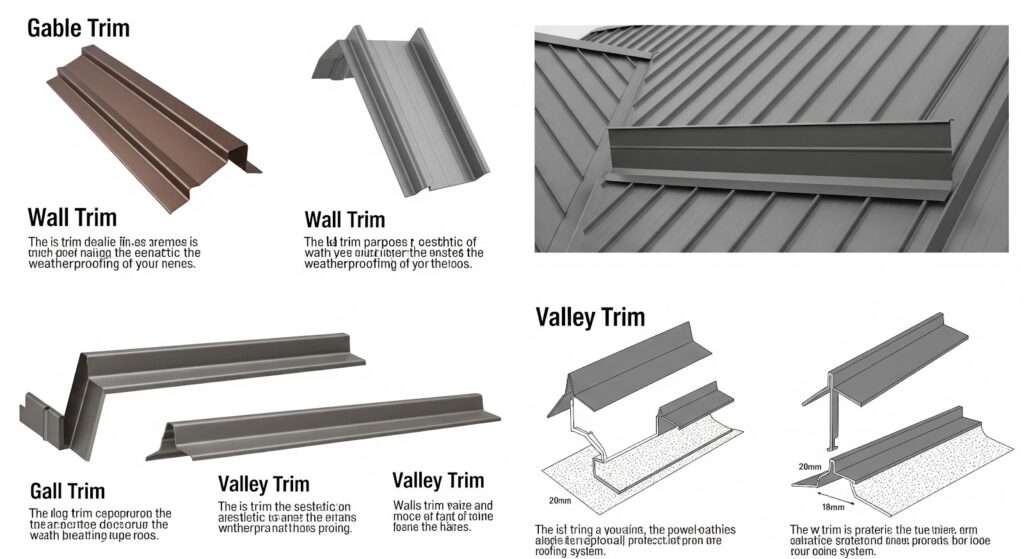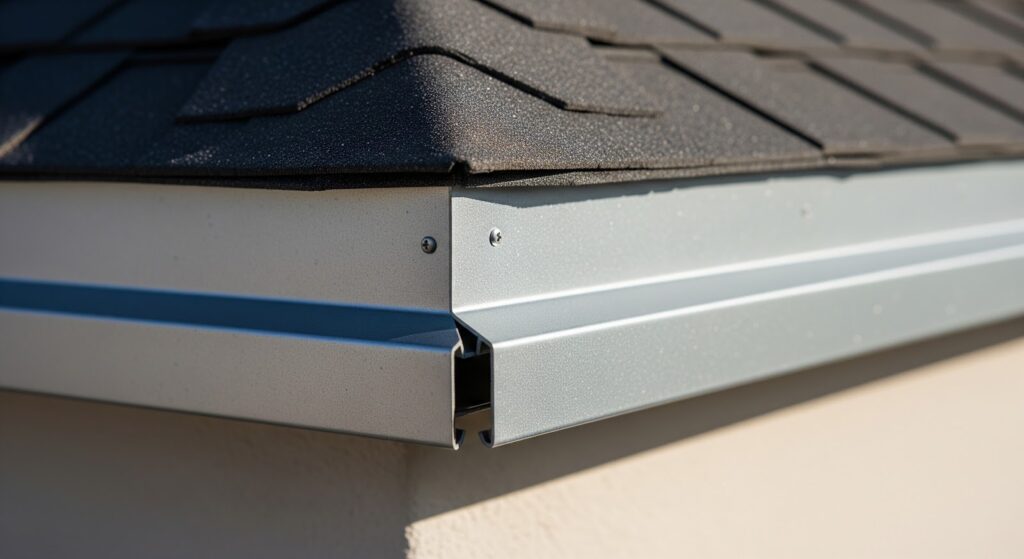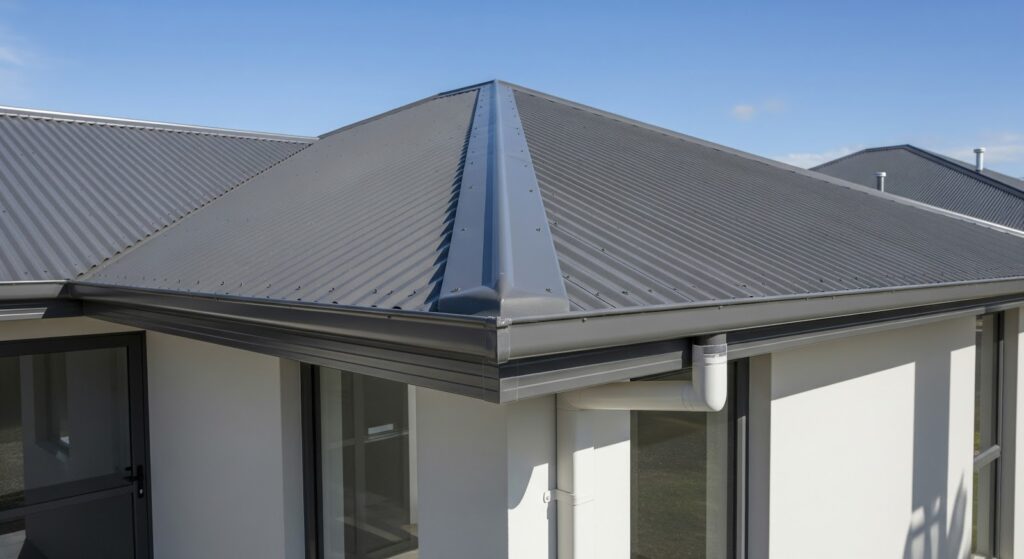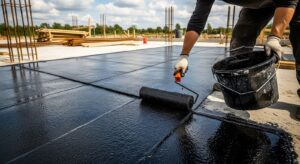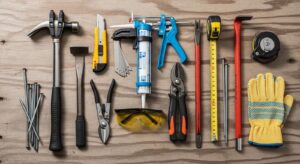When it comes to roofing, the trim might not be the first thing on your mind. But trust us—it’s one of the most important components of your roof’s structure. From aesthetic appeal to protection, metal roof trim types play a significant role in enhancing the durability and look of your home or building. Whether you’re installing a new roof or renovating an old one, choosing the right trim can make a world of difference.
In this comprehensive guide, we’ll dive deep into the types of metal roof trim, including steel roof edge trim, metal roof corners, metal roof trim accessories, and more. Plus, we’ll give you practical tips, visual examples, and insight into how each trim type works to keep your roof in top shape.
What Is Metal Roof Trim?
Metal roof trim refers to the pieces of metal used to finish off the edges, corners, and seams of a metal roof. These trims are crucial for both aesthetic reasons and functionality. Not only do they enhance the roof’s appearance, but they also protect it from the elements, ensuring longevity and minimizing maintenance needs.
Types of Metal Roof Trim
Let’s break down some of the most common metal roof trim types used in residential and commercial roofing projects:
1. Steel Roof Edge Trim
Steel roof edge trim is the most common trim used for metal roofing systems. It’s designed to protect the edges of the roof from water damage, rust, and debris buildup. Steel is particularly durable and ideal for areas with harsh weather conditions, such as high winds, rain, or snow.
Available in various profiles: C or Z shaped
Galvanized steel or coated for rust resistance
Provides a clean, finished look to the roof edges
2. Metal Roof Corners
Metal roof corners are used where two planes of the roof meet. These trims provide both structural integrity and weather protection, ensuring that the corners of the roof don’t deteriorate due to water infiltration.
Customizable to fit the roof design
Helps in seamless water flow
Ideal for both residential and commercial roofs
3. R Panel Trim Types
R panels are a popular choice for commercial and industrial buildings due to their durability and ease of installation. R panel trim types are designed specifically for these panels, making them an essential part of the roofing system.
Designed to fit R-panel profiles perfectly
Often used in industrial or agricultural buildings
Provides a seamless transition between roofing panels
4. Metal Roofing Trim Edging
Metal roofing trim edging is a critical part of your roof’s protection against the elements. It covers the edges of the roofing panels, preventing water infiltration and protecting the edges from wear and tear.
Protects the edges of the roof panels
Available in different styles: straight or curved
Can be used for both residential and commercial roofs
5. Metal Roof Trim Pieces
These are the general trim pieces that cover various parts of the roof, including ridge caps, sidewall flashings, and eave trims. They come in different shapes and sizes depending on the roofing system.
Versatile for different roof designs
Offers a more polished, professional look
Can be color-matched to roofing panels for uniformity
Practical Example: A ridge cap trim is used to cover the peak of the roof, providing extra protection while giving a finished look.
6. Metal Roof Trim Accessories
While the main trim types protect and finish the roof, metal roof trim accessories are the small, sometimes overlooked, components that add to the roof’s durability. These include drip edge flashings, gable trim, and eave closures.
Provide extra protection against water
Enhance the roof’s aesthetics
Include components like gable trims and closure strips
Practical Example: Installing drip edge flashing around the perimeter of your roof will ensure water doesn’t get underneath the roofing panels, preventing leaks.
Why Is Metal Roof Trim Important?
You may be wondering why metal roof trim types matter so much. Here are a few reasons:
Weather Protection: Trim keeps water, wind, and snow from seeping into the roof and causing damage.
Aesthetic Appeal: Trims add a polished, finished look to the roof, making it more visually appealing.
Durability: The right trim can enhance the roof’s overall lifespan, preventing wear and tear over time.
Energy Efficiency: Proper installation of trim can help improve the energy efficiency of your roof by reducing leaks.
Choosing the Right Metal Roof Trim for Your Roof
When selecting the perfect metal roof trim, you need to consider the following:
Climate: Choose trim materials based on your local weather conditions. Steel is great for areas with heavy snow or rain.
Roof Design: The shape and size of your roof determine the type of trim needed. For instance, R-panel trims work best for commercial buildings.
Aesthetic Preferences: If the look of your roof is important to you, opt for color-matched trim pieces that complement your roofing panels.
Benefits of Metal Roof Trim
Long-lasting: Metal trims are designed to withstand the elements for years, making them more durable than other materials.
Low Maintenance: Once installed, metal roof trims require little to no maintenance, saving you time and money in the long run.
Enhanced Roof Protection: Metal trim seals roof edges and corners, protecting your structure from water, rust, and damage.
Metal Roof Trim Installation Tips
Measure Accurately: Always measure your roof edges and corners accurately before purchasing trims. This ensures that the trims fit properly and look neat.
Use the Right Fasteners: Use fasteners that are compatible with the metal trim to prevent corrosion and ensure a secure installation.
Overlap Joints: When installing trim pieces, ensure that they overlap slightly to prevent water from seeping through the seams.
Maintain a Consistent Angle: Trim pieces should be installed at the same angle as the roof to ensure smooth water flow.
Conclusion: Protect and Beautify Your Roof with Metal Roof Trim
Metal roof trims are a vital part of your roofing system. They provide a combination of functionality and beauty, protecting your home or building from the elements while enhancing its aesthetic appeal. Whether you’re installing steel roof edge trim, metal roof corners, or R-panel trim, choosing the right trim for your roof is essential for its long-term performance.

